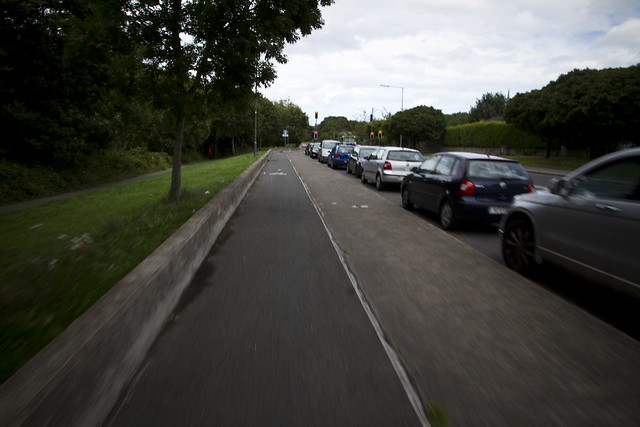

We’ve got a thing for Dublin at Copenhagenize Design Co.. Not least because we’re involved - together with local partners - in three bicycle infrastructure projects in the city. Now we’re loving them just a little bit more. Dublin has been doing traffic counts of people crossing the Cordon Canal towards the city’s centre since the 1980s. The counts are done between 07:00 and 10:00 am and the Dublin Transportation Office has been collecting the data since 1997, releasing results on a yearly basis. The whole starting point of this analysis was to predict the evolution of modal share and to then compare it to the expected population growth. Thus, I wanted to correlate the population numbers evolution with the growth or reduction of three different types of transportation: walking, cycling and by car. First of all, this is the expected population growth for 2020 in Dublin.
 |
| Dublin's expected population growth 2002 - 2020. |
 |
| Dublin's modal share (sources 1 & 2) and trend lines. |
Cycling however, has been booming: according to the Report on trends in mode share of people crossing the Canal Cordon 2006-2011 the number of cyclists entering Dublin City increased 42% between 2006 and 2011. This report goes on to present this number as a result of the implementation of several cycling policies and the success of the city's own bike share scheme, Dublinbike. Indeed, a successful and worthy case study.
Generally, one of the most common actions taken to tackle population growth in city centres is a hopelessly old-fashioned one. Building more roads for cars, increasing the number of parking spaces and enhancing pro-car policies. The new city has no money for that, or the space or the time. Dublin is showing everyone how to be a future-oriented city by doing it as you read this – and even long before this article was written.And then we have current Copenhagen case. The City of Copenhagen is also expecting a rapid population growth. 100,000 extra inhabitants by 2025. How has Copenhagen been planning to deal with this population growth? Cancelling a proposed congestion charge - despite hard evidence from many cities that it would work - and planning a monstrous and expensive new tunnel for motorised vehicles that will increase the number of cars entering the city centre. Furthermore, they continue to ignore the 6-8 lane expressway - Hans Christian Andersen's Boulevard - that slices through the city centre and the current Lord Mayor, Frank Jensen, is putting back in car parking spots after many years of removing them. And so on.
It's more than two steps back, considering this is the city of cyclists. But like we've said before... welcome to the New Copenhagen. Which is why looking at a modern, visionary city like Dublin is refreshing and optimistic. Not to mention inspirational.I've not yet had the chance to visit the city of Dublin but I love it already. As a data geek but also as a bicycle user and an urbanite.




